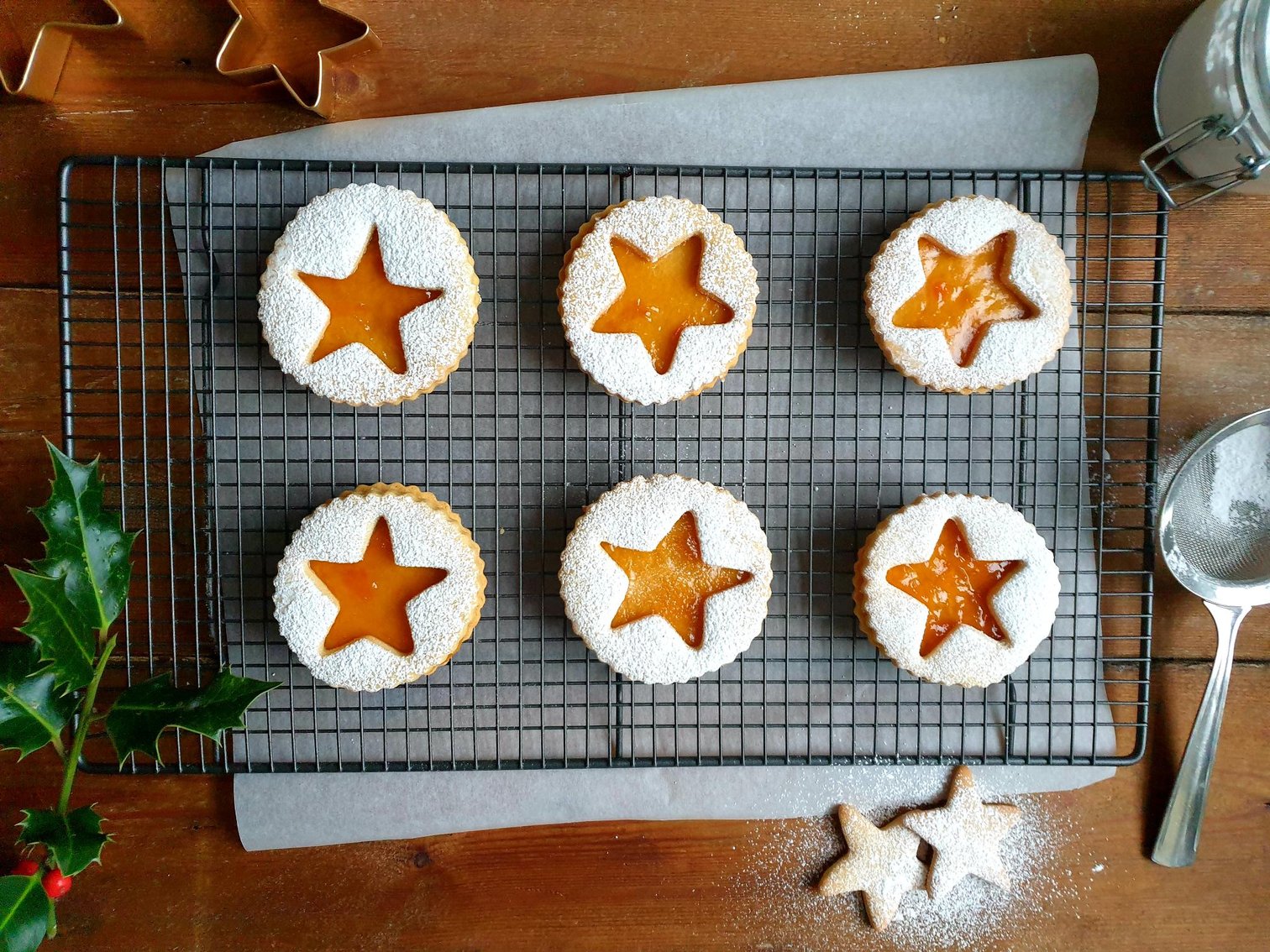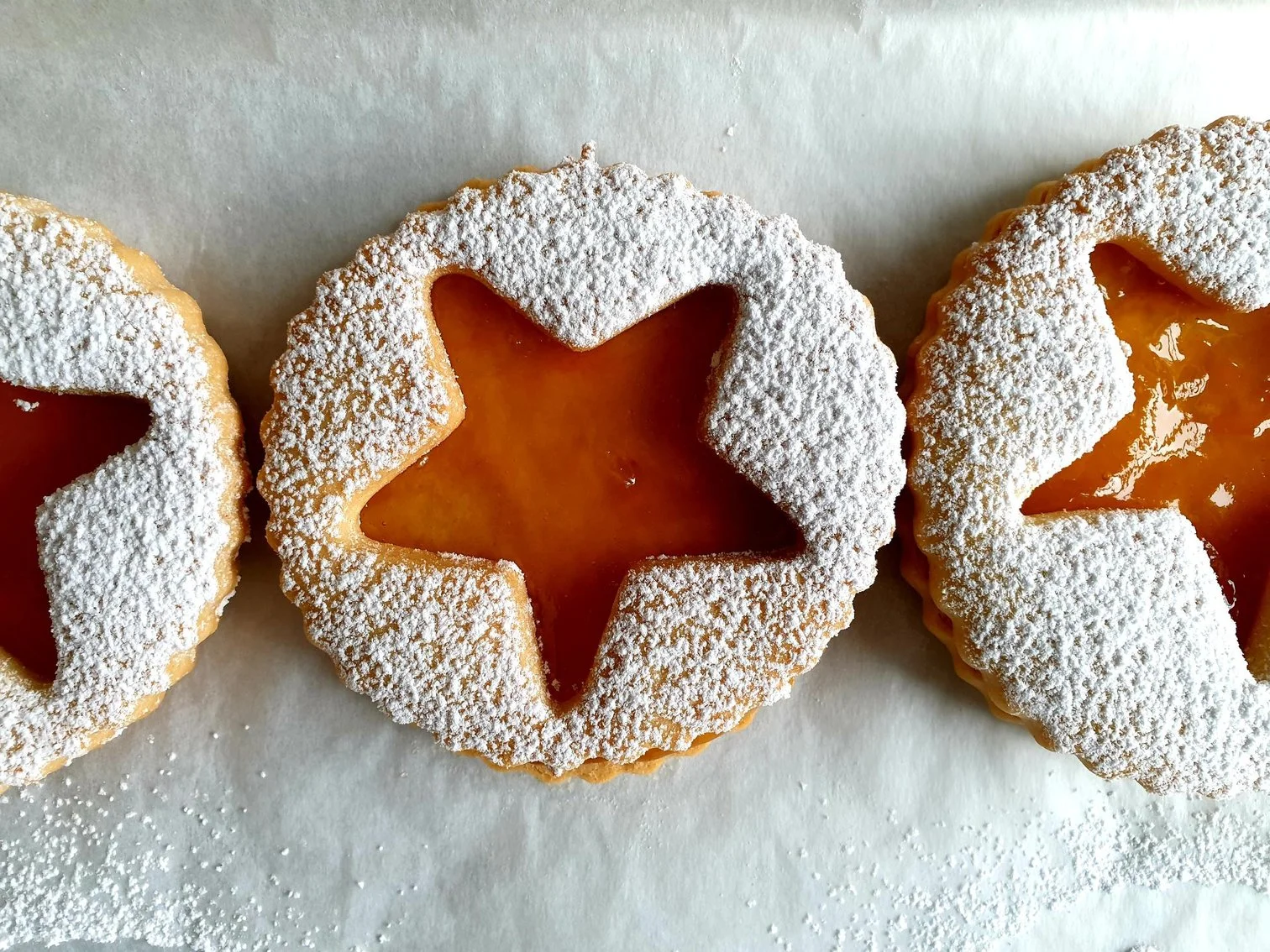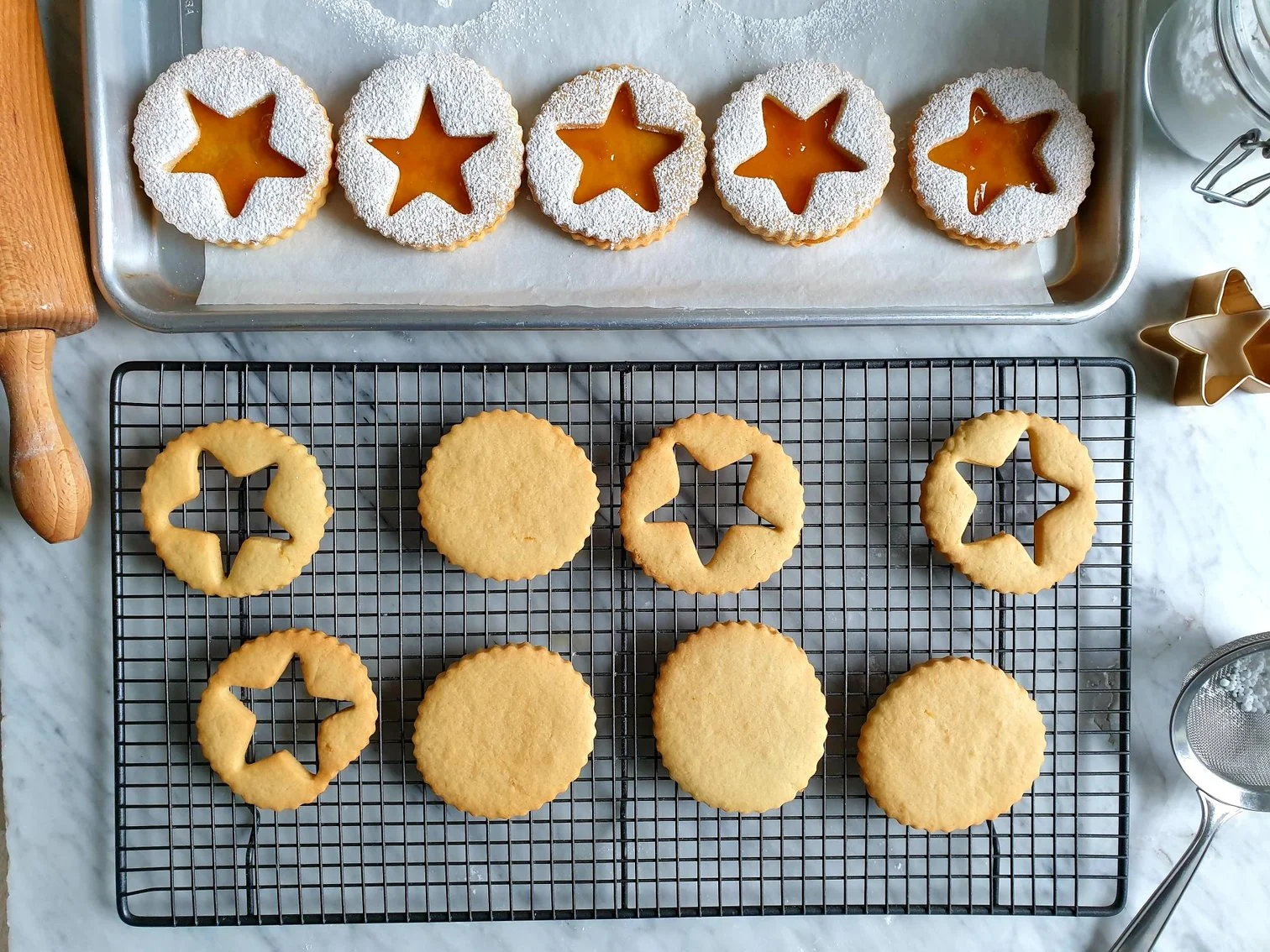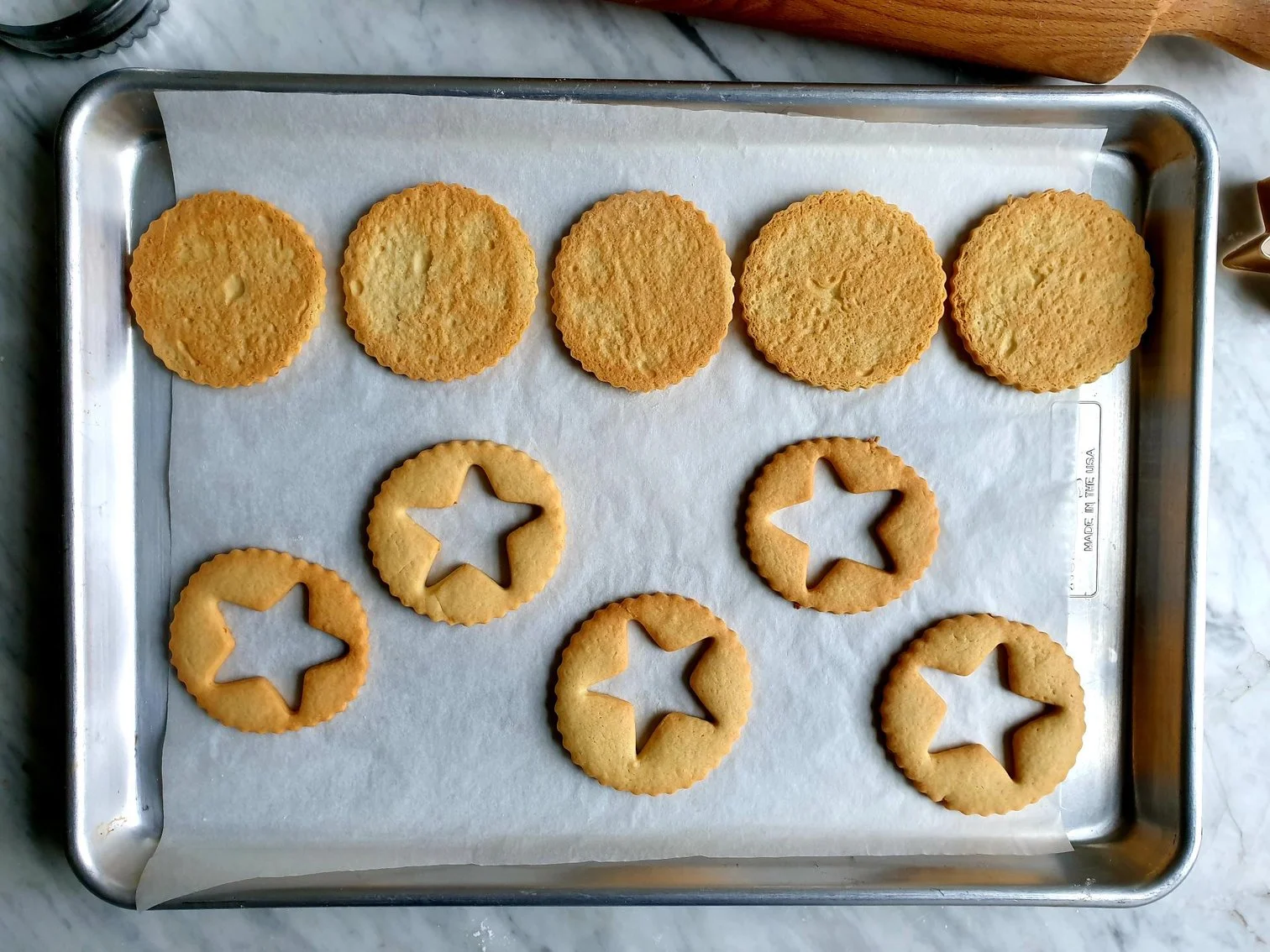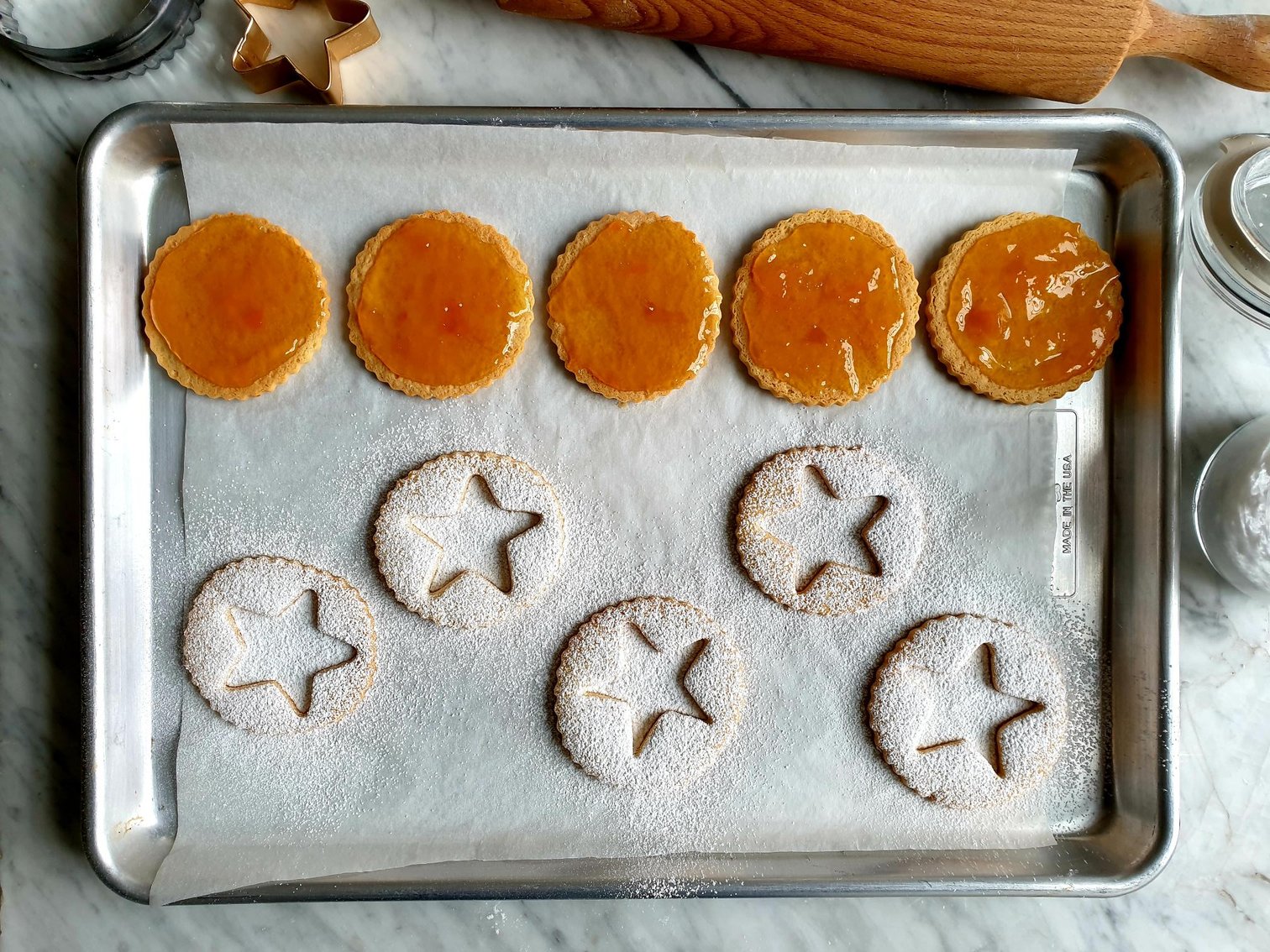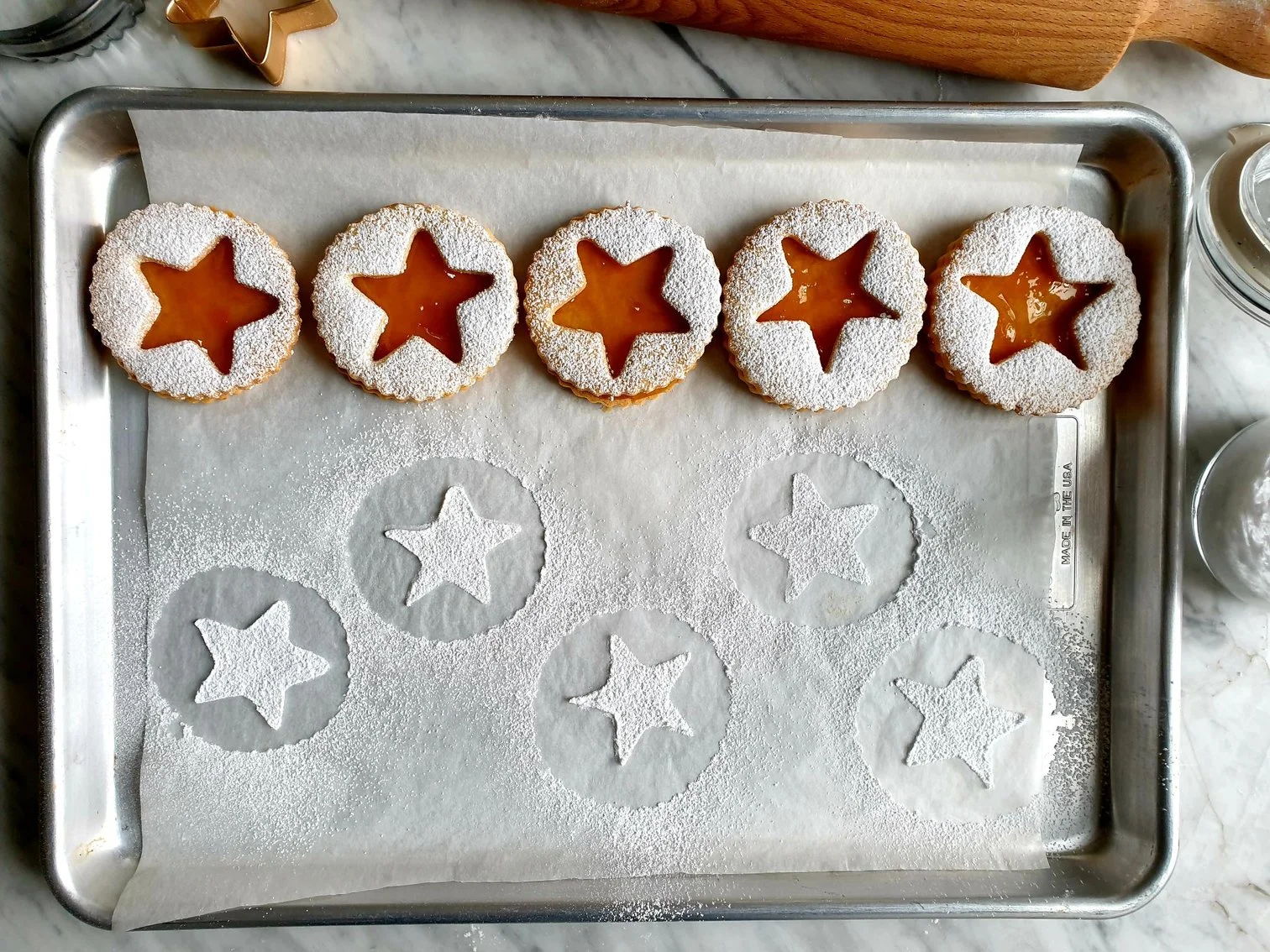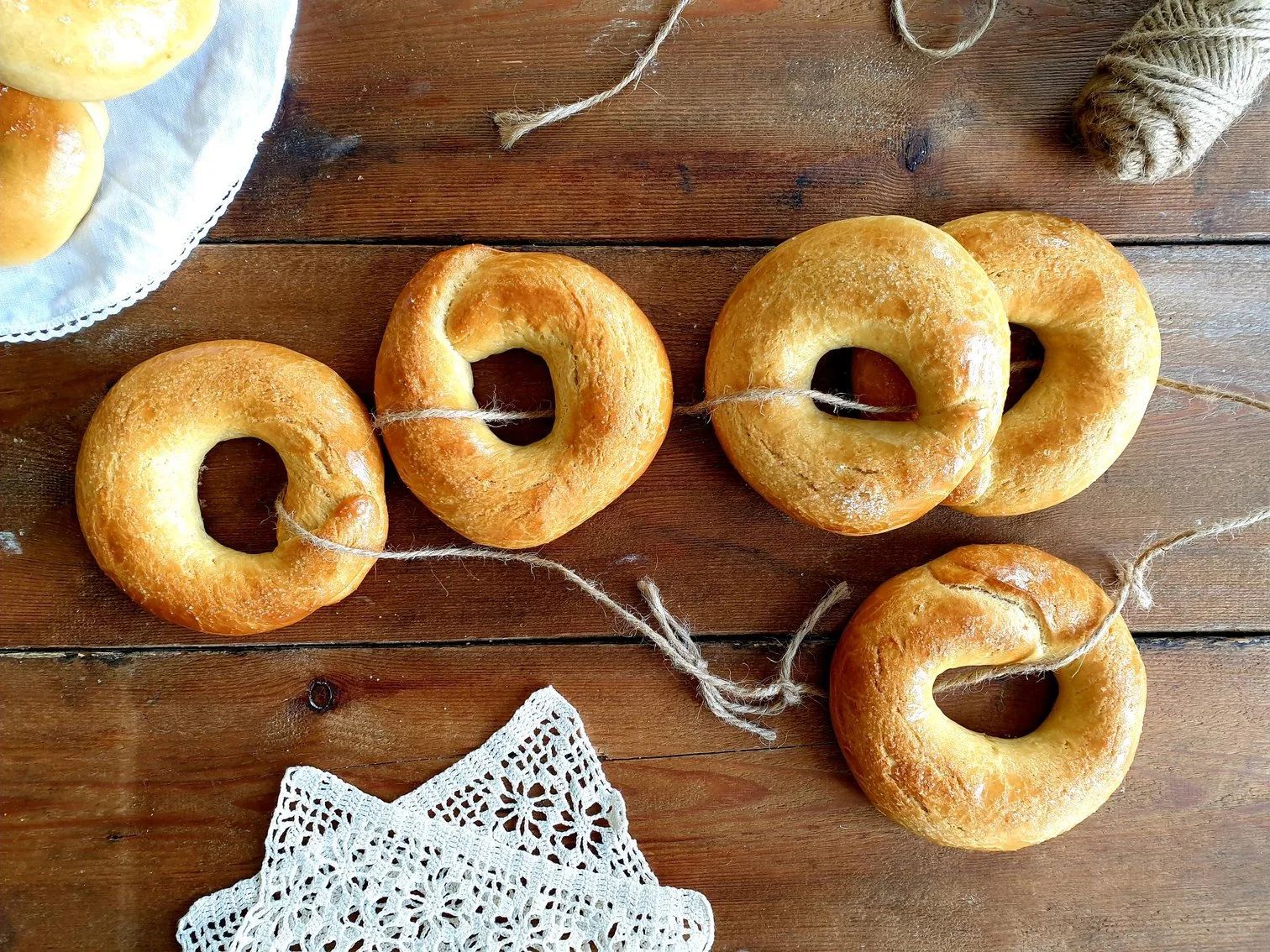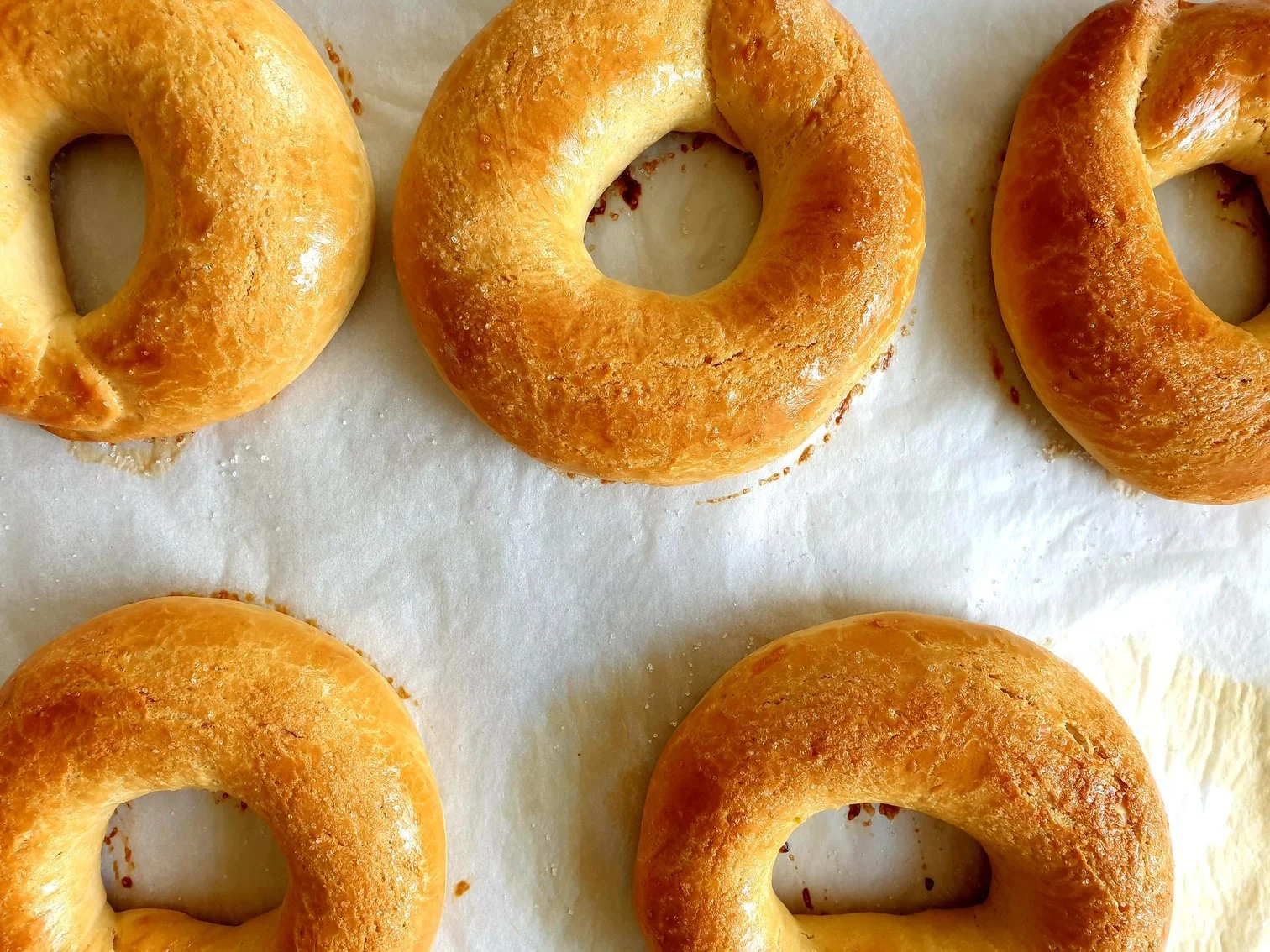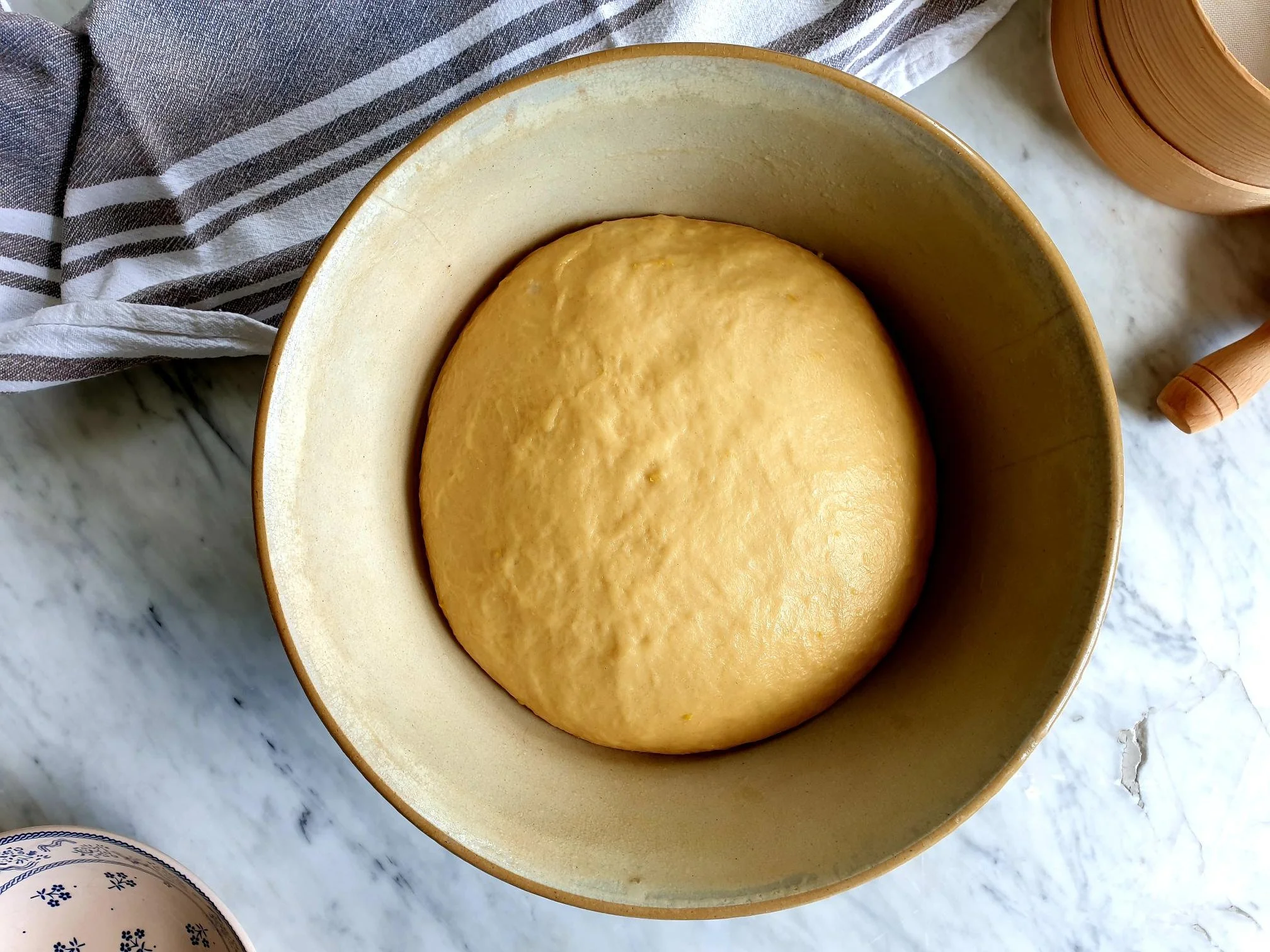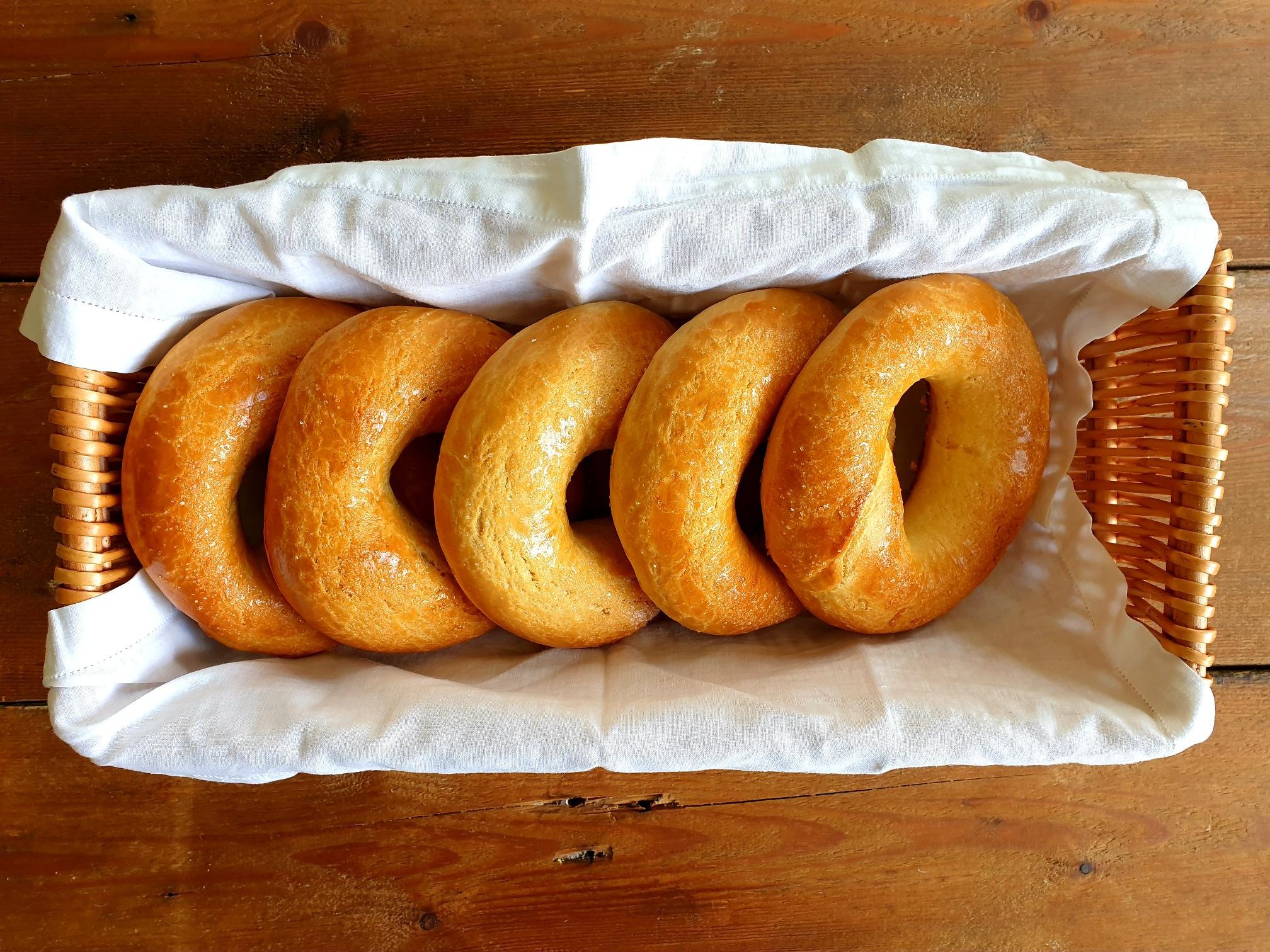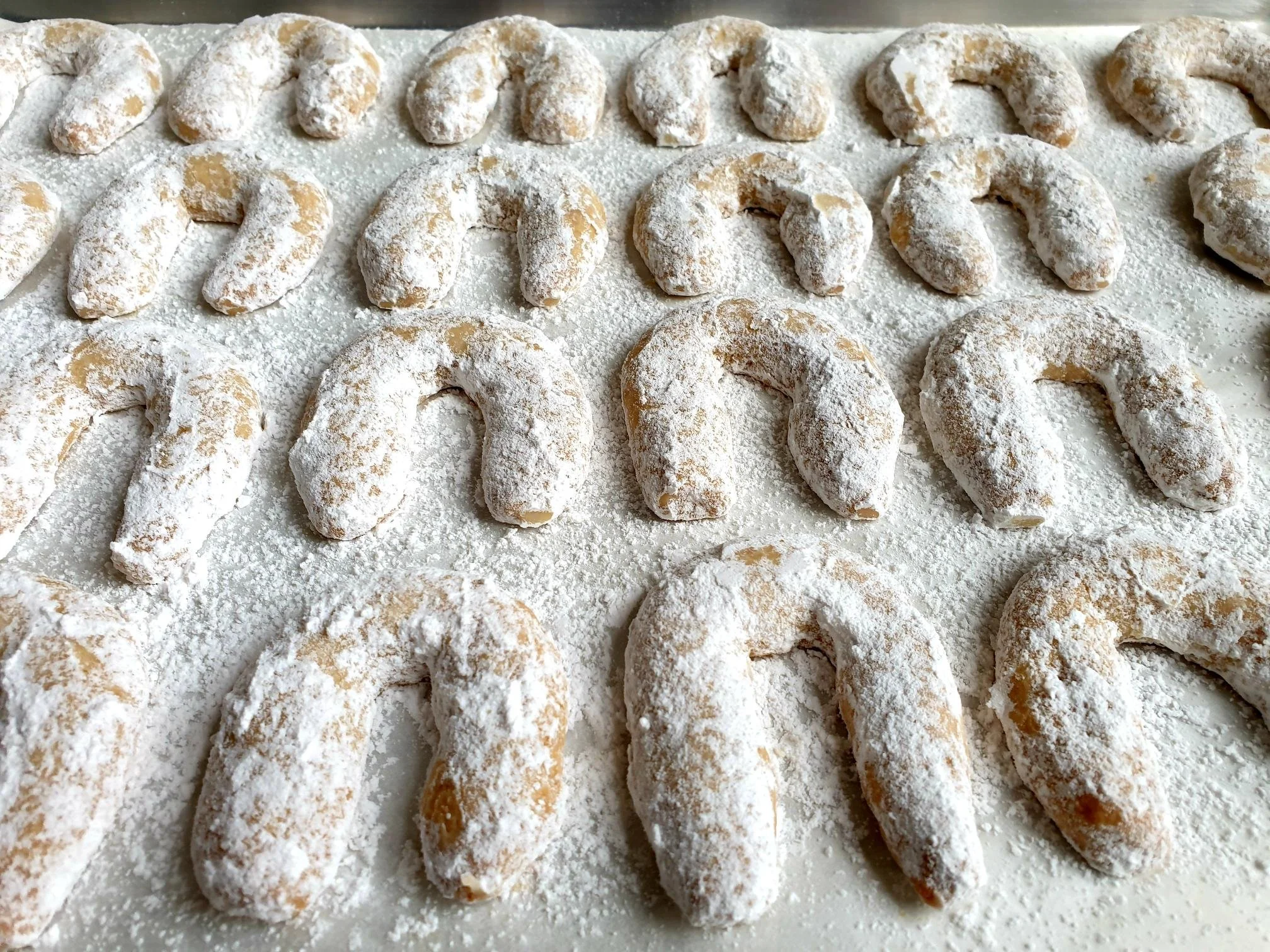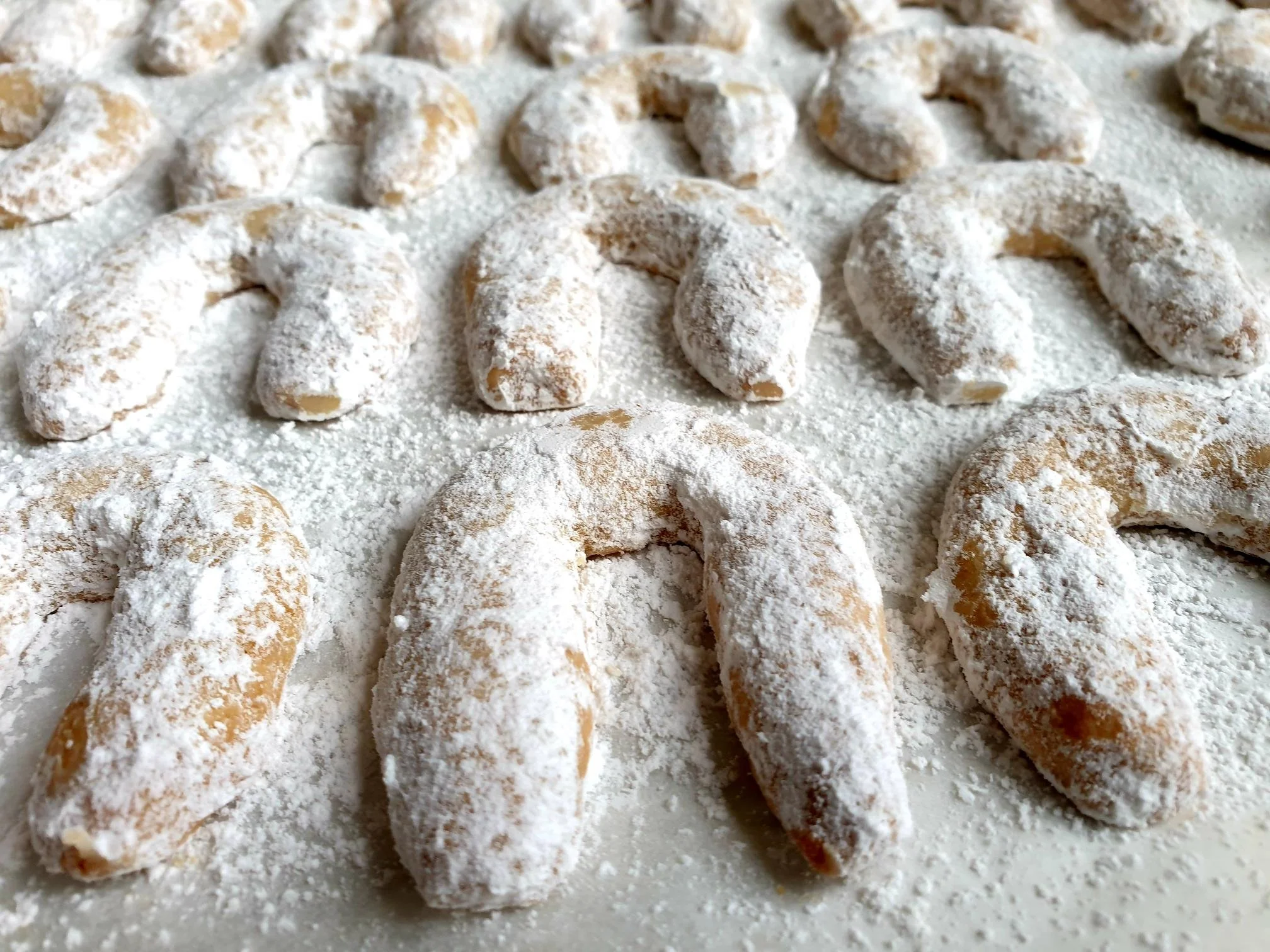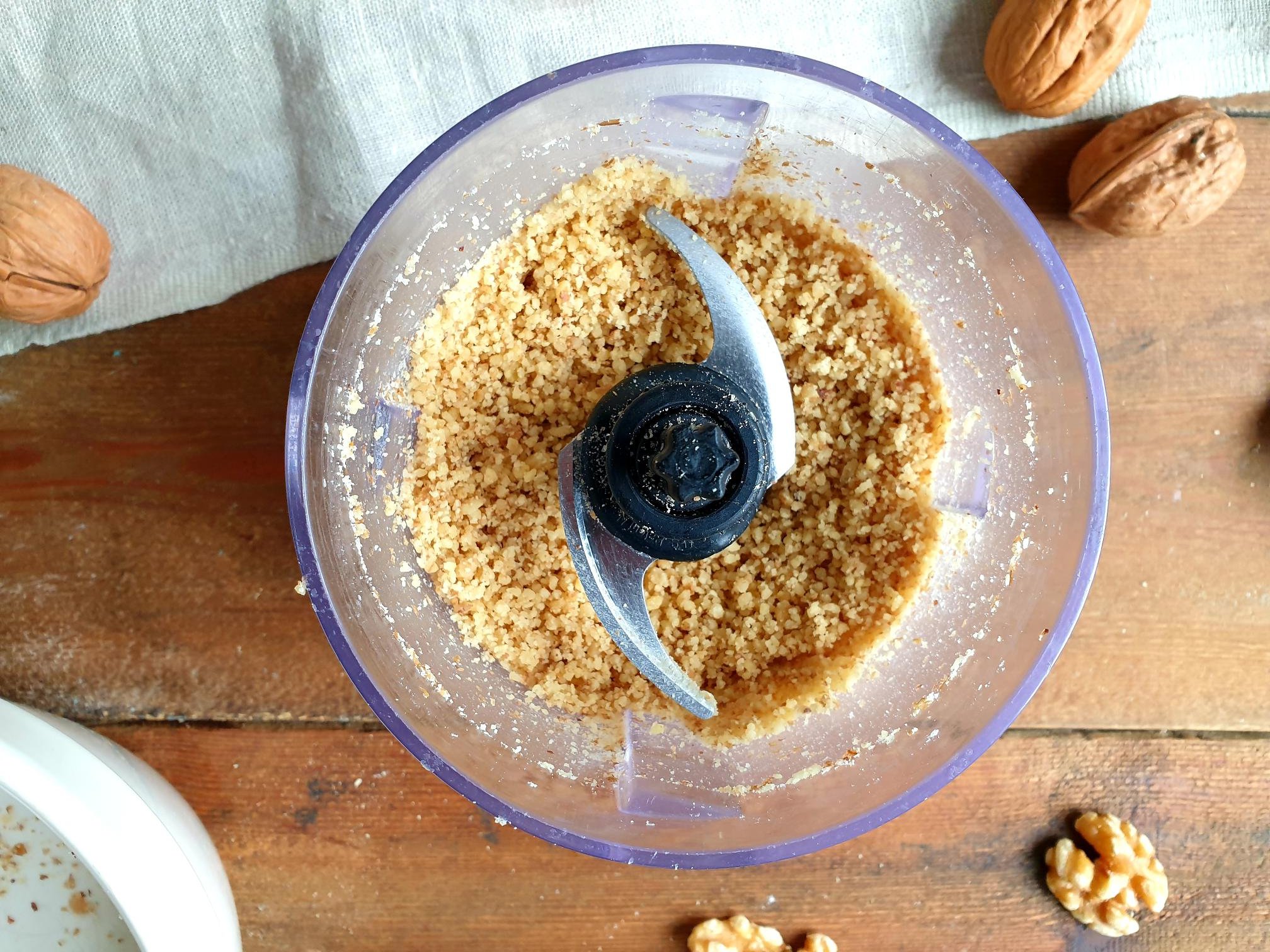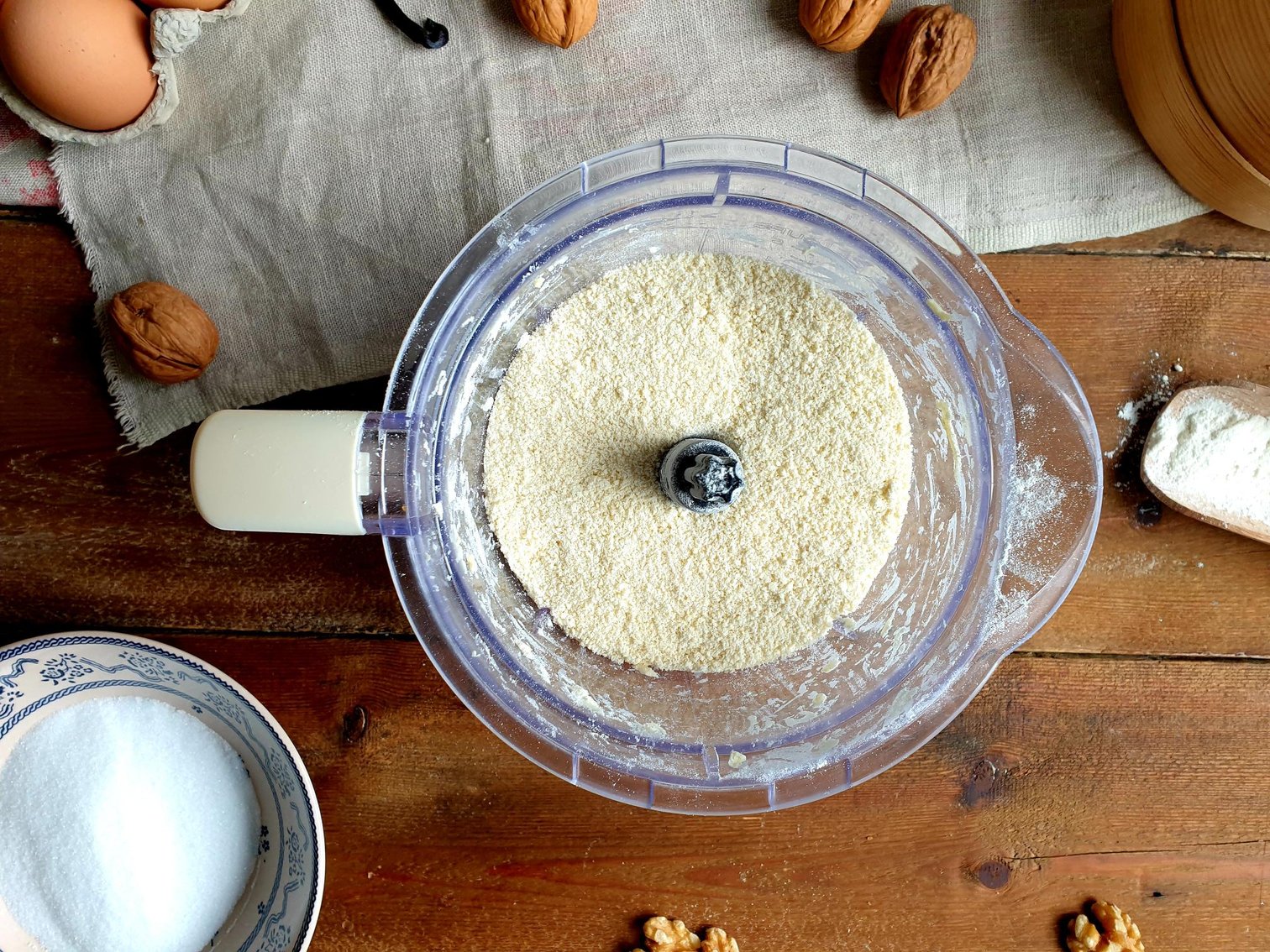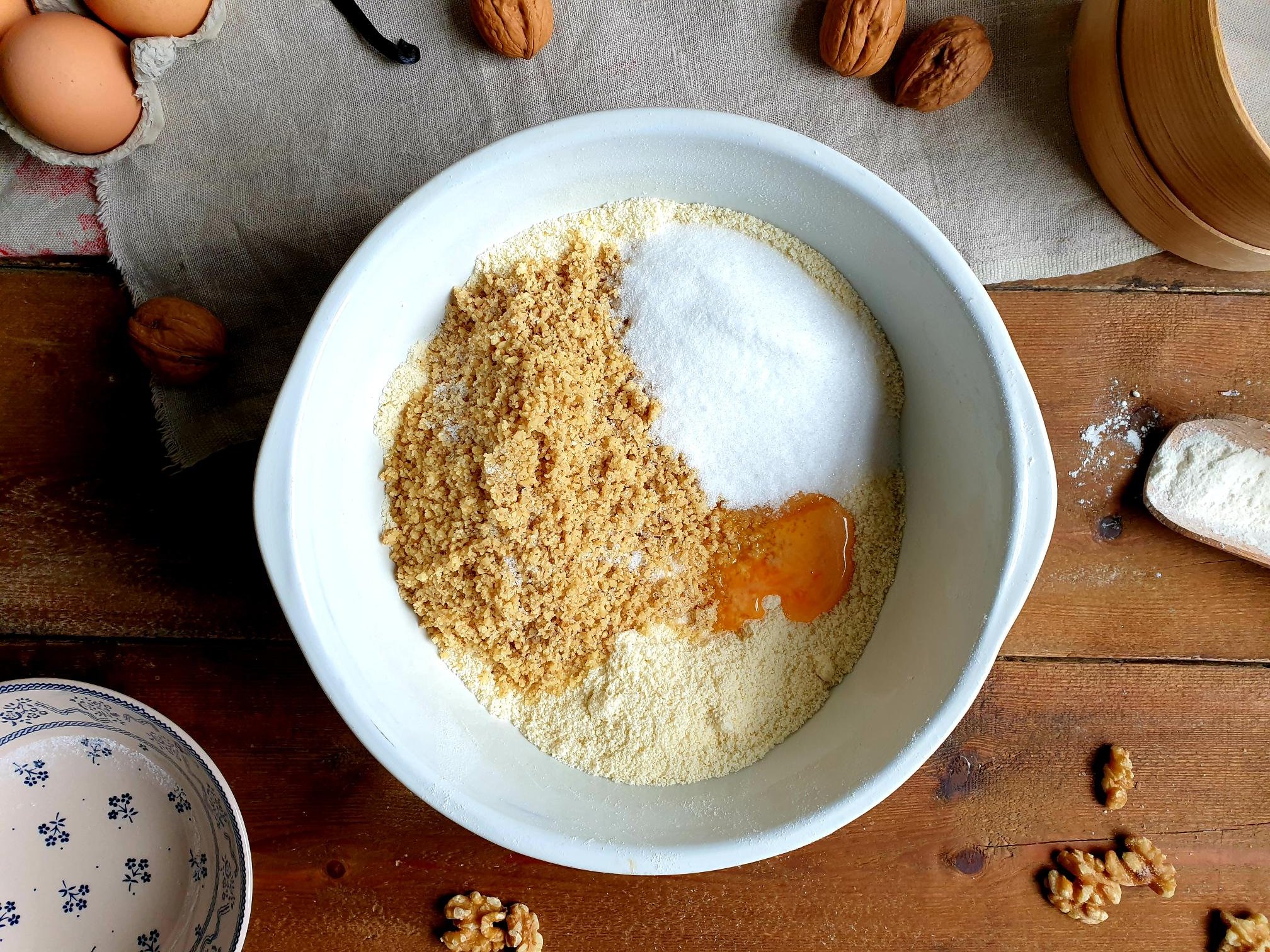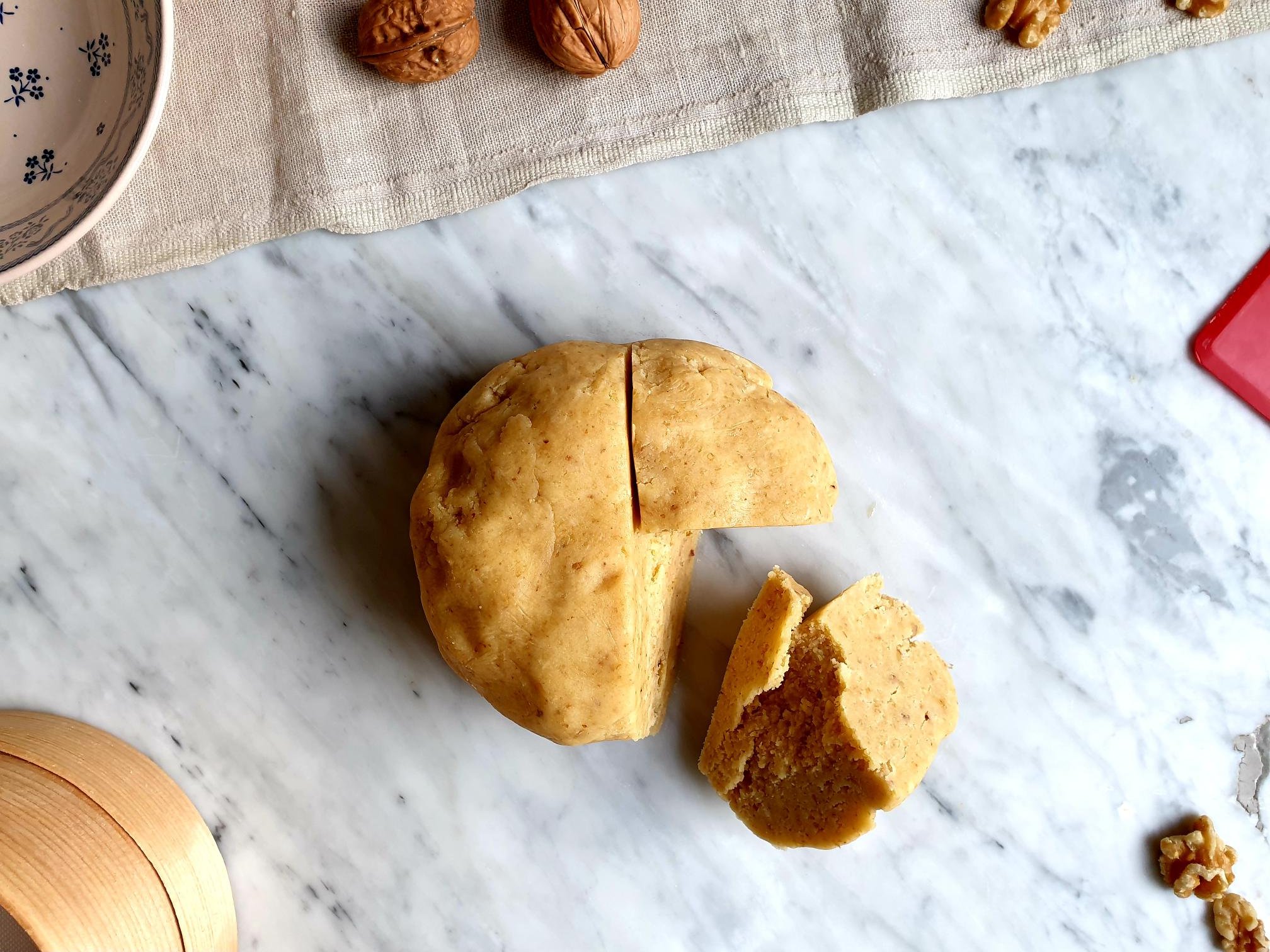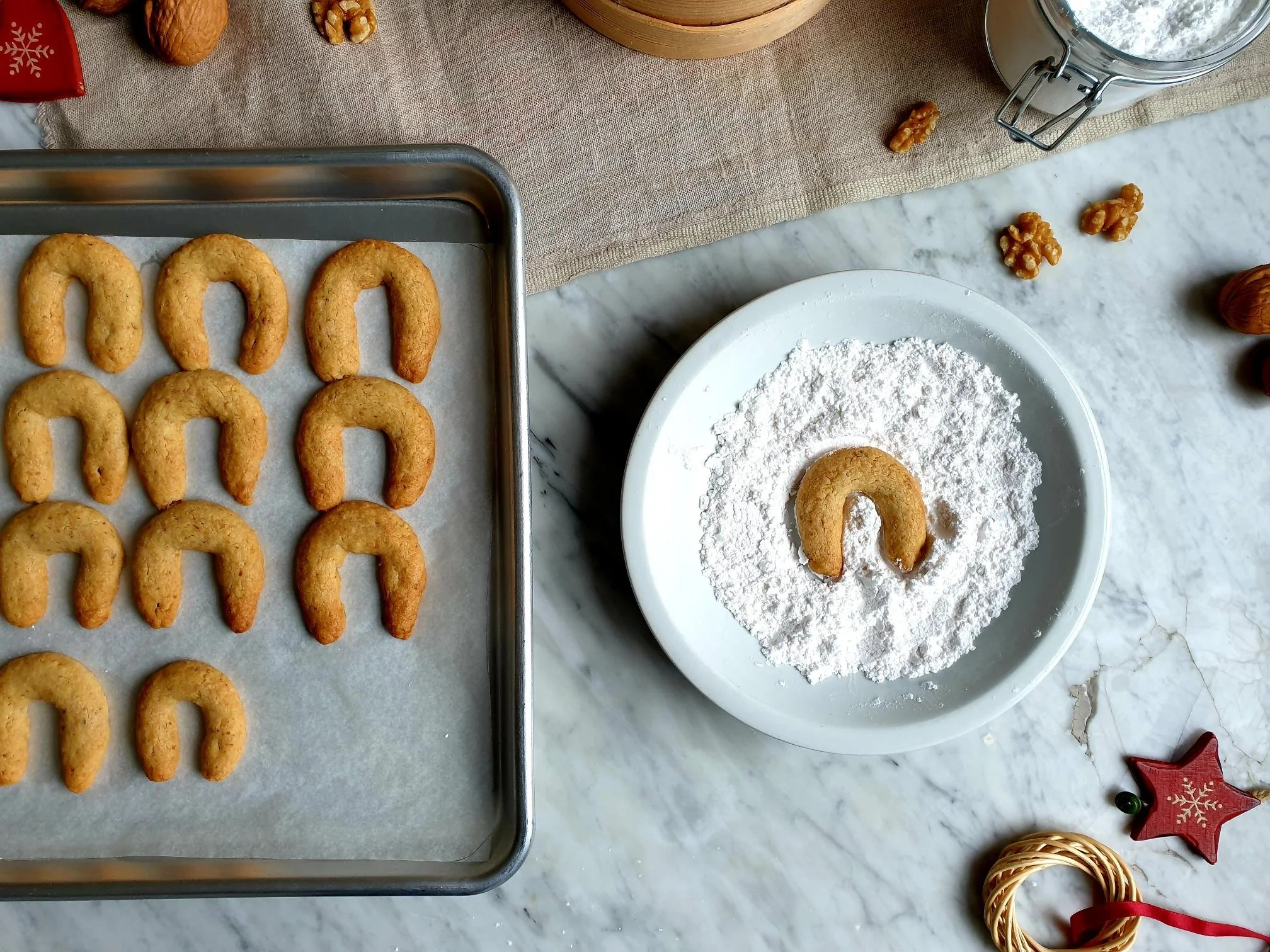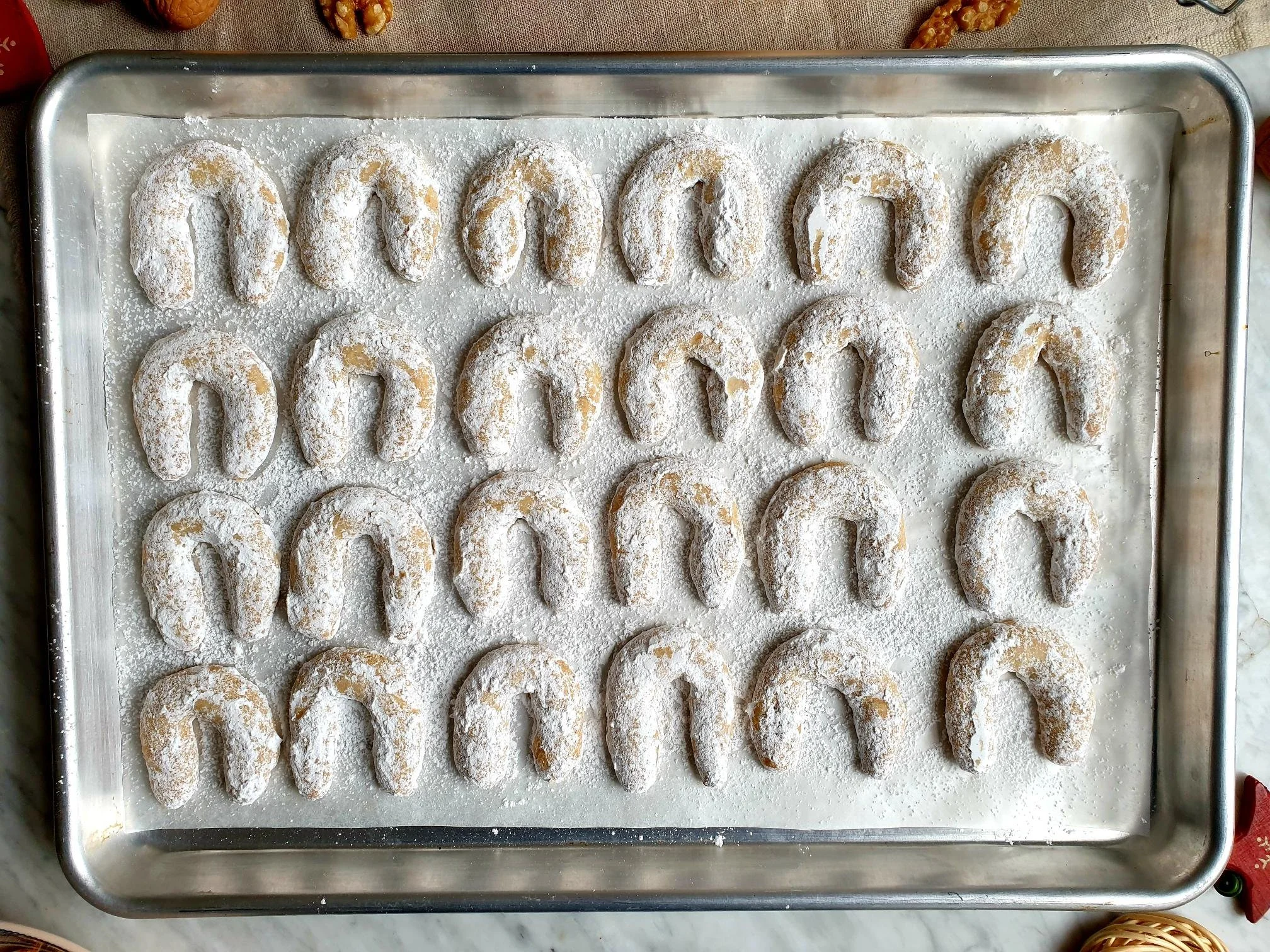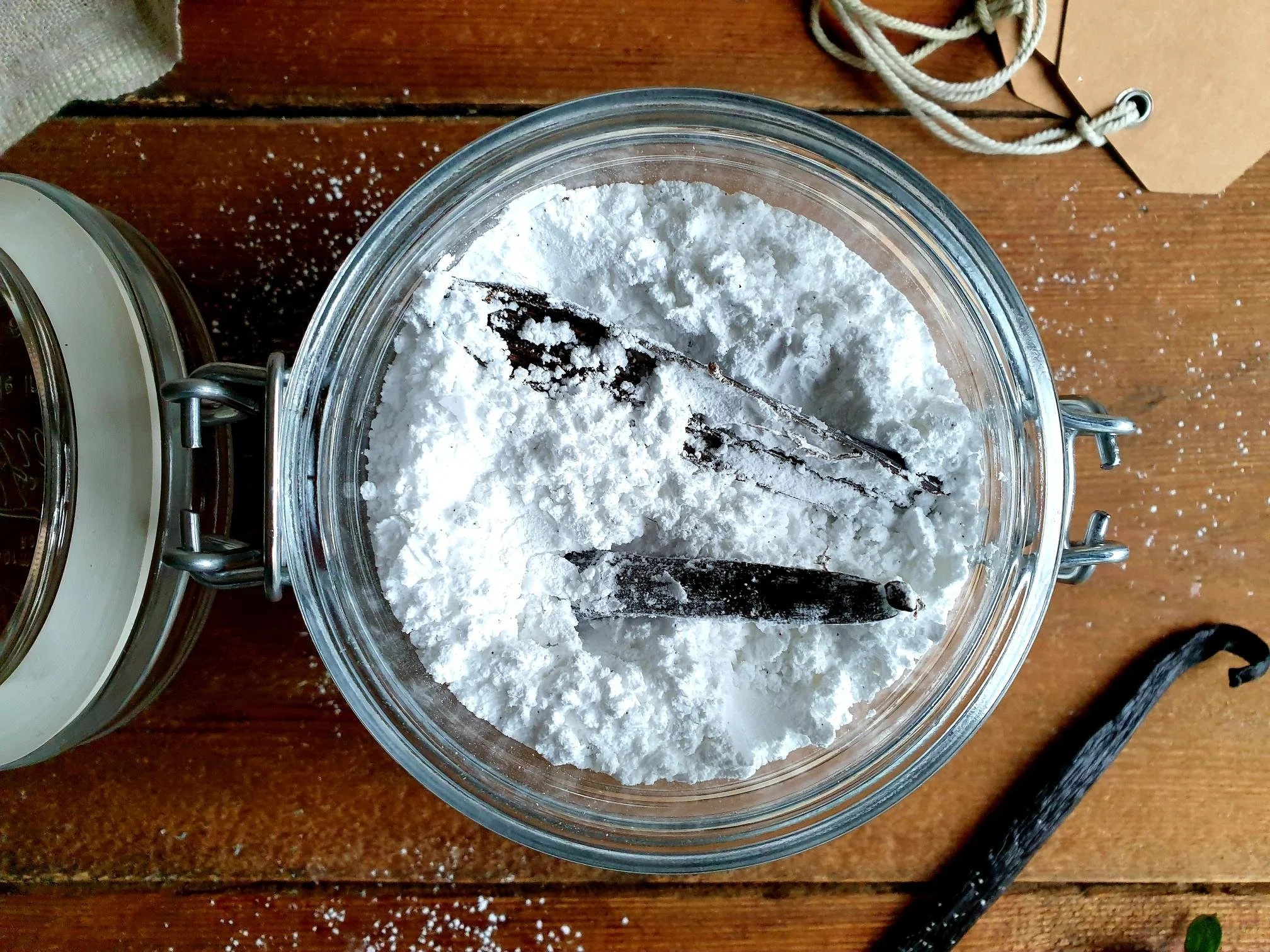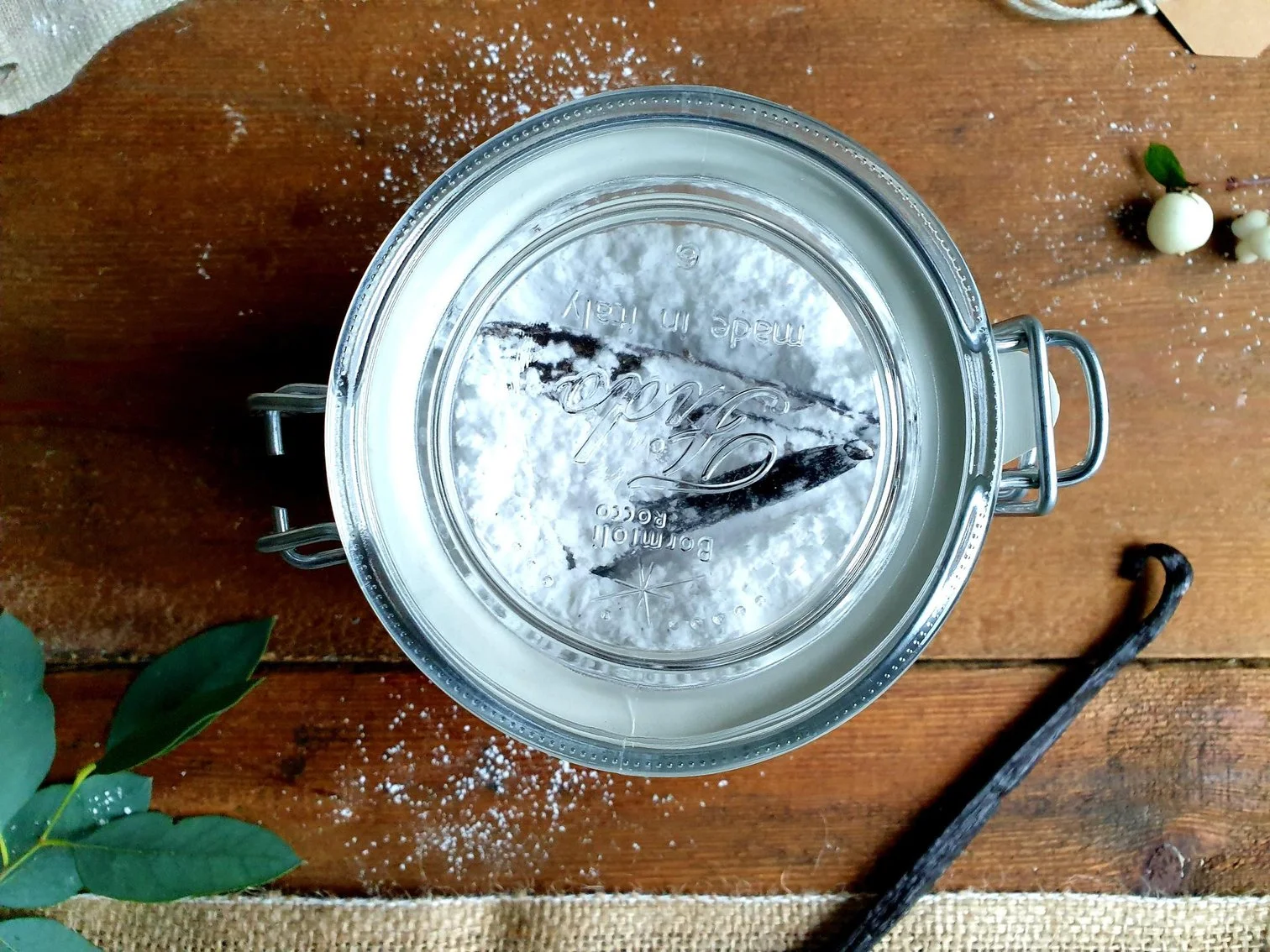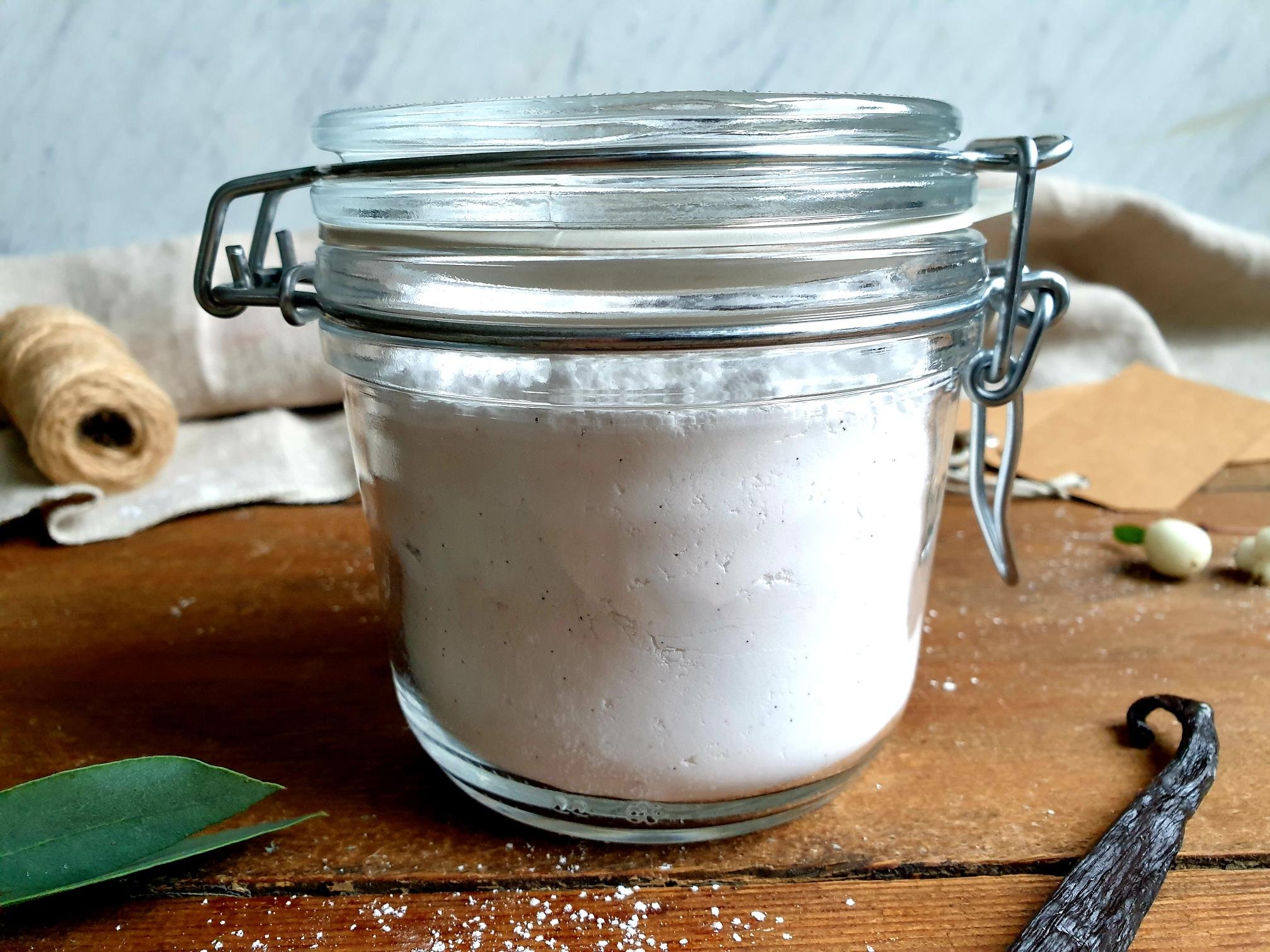Austrian inspired Linzer Cookie Recipe
This incredibly delicious and very pretty in appearance biscuits are made with flour, butter, sugar, eggs and vanilla. Almond flour is very often used to give these irresistible cookies a delicate and light texture. They are jammed together with different types of preserves.
Quick and easy to make, this little works of art can be a perfect holiday gift for your foodie friends and family.
Linzer style cookies are very popular type of biscuits and are traditionally prepared around Christmas holidays in all regions of Slovenia but can be eaten any time of the year.
You can buy them in food stores or bakeries, and they are enjoyed all year round. They are often seen sandwiched together by chocolate spread.
These biscuits are Austrian in origin, and are linked to Linzer Cake, a recipe takes us back to 1653, and so it is often called the oldest recipe in the world. There are speculations, guesses and different legends and stories as to where the Linzer cookies come from. It is believed that Linzer biscuits originated in the Austrian city of Linzer by a pastry chef, who mixed the ingredients for the cake but rather than making a cake cut out the cookies instead.
This recipe, like many others, has variations and adaptations, one of which does not include almond flour as an ingredient.
I am sharing here the family top favourite recipe for the festive baking.
Recipe
Ingredients
125g soft butter (at room temperature)
1 egg, small or medium (at room temperature)
75g caster sugar
1 ½ Tbsp vanilla sugar or ¼ Tsp vanilla extract
finely grated lemon zest of ½ lemon
250g plain white (all purpose) flour, plus more for rolling out
2 Tsp baking powder
a pinch of fine sea salt
icing sugar or vanilla icing sugar, to dust the biscuits
a pinch of ground cinnamon, optional
a pinch of ground nutmeg, optional
smooth apricot jam (can use strawberry, raspberry or red currant jam, or any jam of your preference)
Method
Place softened butter and sugar in a mixing bowl and beat until pale and fluffy.
Add the egg, finely grated lemon zest, vanilla sugar (or vanilla extract), and mix until all the egg is fully incorporated (if you happen to get a bit of “curdled appearance” at this stage do not worry).
Add sifted flour together with the baking powder and mix with the wooden spoon first until all the ingredients are incorporated and the dough comes together in large clumps.
Transfer to a lightly floured surface (or keep the mixture in the bowl) and with your hands gently knead the dough until it becomes soft and smooth (if the dough is too wet to handle add a bit of flour at the time until you get the dough that does not stick to your hands or to the working surface; the wetness of the dough will depend on the size of the egg you are using).
Shape the dough into a disc and wrap it tightly in cling film.
Put the dough in the fridge and let it rest and chill for at least 30 minutes.
Lay a baking tray with baking parchment.
Take the disc of the dough out of the fridge and place it onto a lightly floured working surface.
Lightly flour the rolling pin and gently roll out the dough to the thickness of about 4mm.
Stamp out rounds (circles) using a smooth or crinkle-edged cookie cutter and place on a baking tray.
(I decided to make quite big biscuits and used 9cm, 3 ½ - inch, fluted round cookie cutter).
If the dough sticks to the cookie cutters, deep them into the flour first.
Lift away the excess dough, form a ball and roll it out again.
Cut out as many more biscuits as you can.
Use a small round or select your favourite mini festive cookie cutters (heart, star, Christmas tree, flower for example) to stamp a circle, or other shapes, from the centre of the biscuits.
Remember you need to end up with an even number.
Place on a baking tray and bake in a preheated oven at 180°C static or equivalent for about 10 minutes or until light golden in colour (the baking time will depend on the size of the cookies).
When baked, leave to cool just for a few minutes on the tray, then transfer to a wire rack to cool completely.
When the biscuits are completely cold, they are ready to be sandwiched together.
Turn the whole biscuits upside down.
Spoon on top a bit of jam and spread it over the biscuits.
Dust with icing sugar or vanilla icing sugar the top part of the cookies you cut the shape out of.
Sandwich the biscuits together, use the other half of the biscuits with icing sugar and gently place them on top of the other bottom half of the biscuits.
When freshly baked this Linzer style biscuits are nice and crunchy but will become softer the following day and just melt in your mouth.
Just a thought
You can keep the biscuits in the airtight container for about six days.

